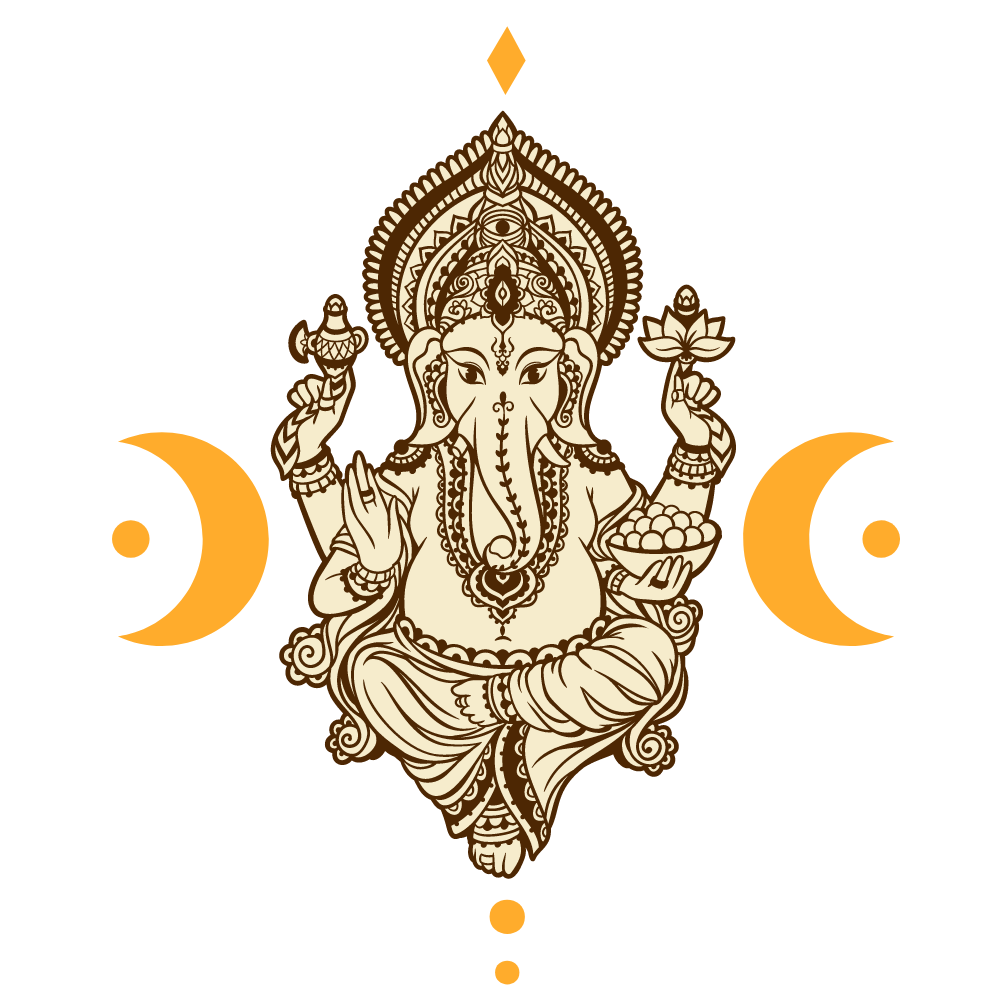
The chanting of Sanskrit Mantras is an ancient practice that has been used as a form of prayer and worship for centuries.
Sanskrit mantras are believed to have healing powers.
What is a mantra?
Mantras are mystical hymns and syllables written in the most ancient language of our world – Sanskrit. Every word in Sanskrit can be sung and assigned to a rhythm.
Sanskrit Mantras: The Origin
The origin of all the mantras ever created is said to have emerged from the damaru, Lord Shiva’s instrument.
It is important to note here that if you do not believe in a God that has a form, mantra science will be of little use to you. It would be more beneficial for you to perfect the art of meditation instead.
According to Puranic legends, when Shiva performed his cosmic dance, the Mahatandava (the Great Dissolution), the vigorous play of his damaru created many sounds scattered in the universe for eons. Seventy million different sounds manifested that covered the entire spectrum of all mantras to be ever created.
But that’s not all.
Eleven trillion years after the Mahatandava, Devi, who had been reborn to King Daksha as Sati and married Shiva, asked him, “Why do billions of lifeforms have to go through suffering? What can they do?”
“They must remain connected to the source, the universal energy,” Shiva replied. “For, the source has all the wisdom anyone ever seeks.”
And how does one remain connected?
By picking any sound the damaru created.
But, you see, the Mahatandava was witnessed only by Devi before she merged into Shiva. Nobody else knew of the sounds that were created during the great destruction. So, how would these sounds reach the beings who so needed it?
And so, Shiva chose to perform the Tandava this time, his dance of love. Out of compassion for all living beings across the universe, he raised his damaru and began playing it. As he danced to its heady rhythm, millions of sounds spread in the sky. Every time the string of the damaru swooshed through the air, it created a sound.
Many other sounds of different frequencies were produced when the beads at the end of the string would strike the damaru heads. Shiva’s moving hands and feet all created sounds. His swaying matted locks, the sound of the rudraksha beads around his wrists, the slithering cobra around his neck – every movement gave birth to a sound.
And each sound was a mantra representing the feminine, masculine or neutral aspect of creation.
On the path of mantra yoga, Shiva is the only creator of mantras.
The sages of yore, meditating on the formless, were quick to perceive these sounds. Some of these seers, like Parasurama, Gautama, and Dattatreya, chose to pass on the mantras to the flourishing yet suffering race we know as humans today.
They put down the sounds into 14 categories that captured 57 letters. These 57 letters formed the basis of Sanskrit.
Mantra meaning is not as important as the sound of the mantra, which is considered to be a sacred vibration. When you chant a mantra, you are said to be “waking up” this vibration and bringing it into your life. As such, mantras are often associated with Hindu gods or goddesses who represent different aspects of reality.
Mantra definition is that it is a sacred sound, word or group of words that is repeated during meditation as a means of focusing attention. Chanting mantras has been shown to help people focus their thoughts on the present moment and get into an altered state of consciousness (ASC).
The Common Mantras
Given India’s rich cultural and spiritual heritage, many of these mantras have trickled down into all households across the country. They are commonly used in daily prayer, religious rituals, chanting, and even hymns.
Here is a list of some of the most common mantras:
1. Aum/Om
2. Om Namah Shivaya
3. Om Namo Bhagavathe Vasudevaya
4. Hare Krishna, Hare Rama
5. The Gayatri Mantra
The above and many more, like Om Krishnaya Namah and Om Sri Matre Namah, are an inextricable part of daily living in Indian culture. When chanted consciously or unconsciously, every mantra keeps us yoked to the Divine source.
What are the most powerful Hindu mantras?
Some powerful Hindu mantras are:
Om Namah Shivaya: This is a very powerful mantra that can be used to invoke Lord Shiva. It is very effective in using it for meditation and to have a deeper understanding of the universe around us.
Om Namo Bhagavate Vasudevaya: This mantra is used to invoke Lord Krishna into our lives. It also helps in increasing one’s spiritual powers and gives self-confidence, intelligence and knowledge.
Om Sri Maha Vishnuaya Namaha: This is a very powerful mantra that can be used to invoke Lord Vishnu into your life. It helps in bringing happiness, peace and prosperity into your life.
Om Surya Narayanaya Namah: This is one of the most popular mantras that are chanted by many people across India because it helps in keeping away all the bad energies from your life, giving protection from evil forces and also brings about positive energy into your life
Below is the most commonly practiced list of mantras and their benefits.
Om Namah Shivaya Mantra
Om is the sound of the universe. It is the primordial vibration that was present at the beginning of creation itself. By chanting this mantra, you are connecting with your highest self and all that is. The word “namah” means “I bow to” or “I worship,” and Shivaya is derived from Shiva, meaning “auspiciousness” or “good fortune.” This mantra invokes Lord Shiva, who represents the supreme consciousness.
This mantra is said to be the most powerful mantra in Buddhism, and its recitation leads to enlightenment. The name translates as “Homage to the Jewel in the Lotus,” and it’s known for its healing properties, such as cleansing negative karma and past life trauma, relieving stress, promoting inner peace, and fostering compassion for others.
Om Namo Bhagavate Vasudevaya Mantra
This mantra is dedicated to Krishna, one of Hinduism’s most popular deities who represents love and devotion. As such, it’s said that reciting this mantra will bring you closer to God or Krishna himself by invoking his name through repetition while performing different.
Aum Shri Maha Lakshmiyei Namaha: This is a very powerful mantra that helps in removing poverty, disease and brings prosperity to you.
Om Sri Maha Ganapataye Namah: This mantra is used for removing obstacles in life and attaining success.
Om Sri Maha Lakshmi Nama: This mantra is used for prosperity in life and attaining success.
Sarve Bhavantu Sukhinah – A universal prayer for happiness and well-being.
Sat Kartar – “True Creator” – A mantra that reminds us that all creation comes from God and it is only God who can create anything new from nothingness; hence being True Creator means He has no equal or rival, and no one can match His greatness! This mantra helps one realize that everything in this world has come into existence through Him alone!
Om
Om is a sacred sound that is the source of all mantras. It is the first mantra of the Vedas, from which all other mantras are derived. The Om symbol has three sounds – A, U, and M – representing creation, maintenance, and destruction, respectively.
Benefits: Repetition of Om brings peace and tranquility to mind. Recitation of this mantra helps in healing diseases, as well as in attaining mental peace and happiness.
Gayatri Mantra
The Gayatri Mantra is one of the most revered mantras in Hinduism, originating from Rig Veda. The Gayatri Mantra is said to have originated from Savitur (the Sun God), who learned it from Brahma himself. This mantra is considered very sacred because it contains three Vedic deities – Savitr, Vishnu and Brahma.
Benefits: The Gayatri Mantra has been used by Hindus for centuries for its healing powers and spiritual development. Reciting this mantra can help in achieving mental clarity and concentration levels, which eventually leads to enlightenment or self-realization.
List of Mantras in Sanskrit
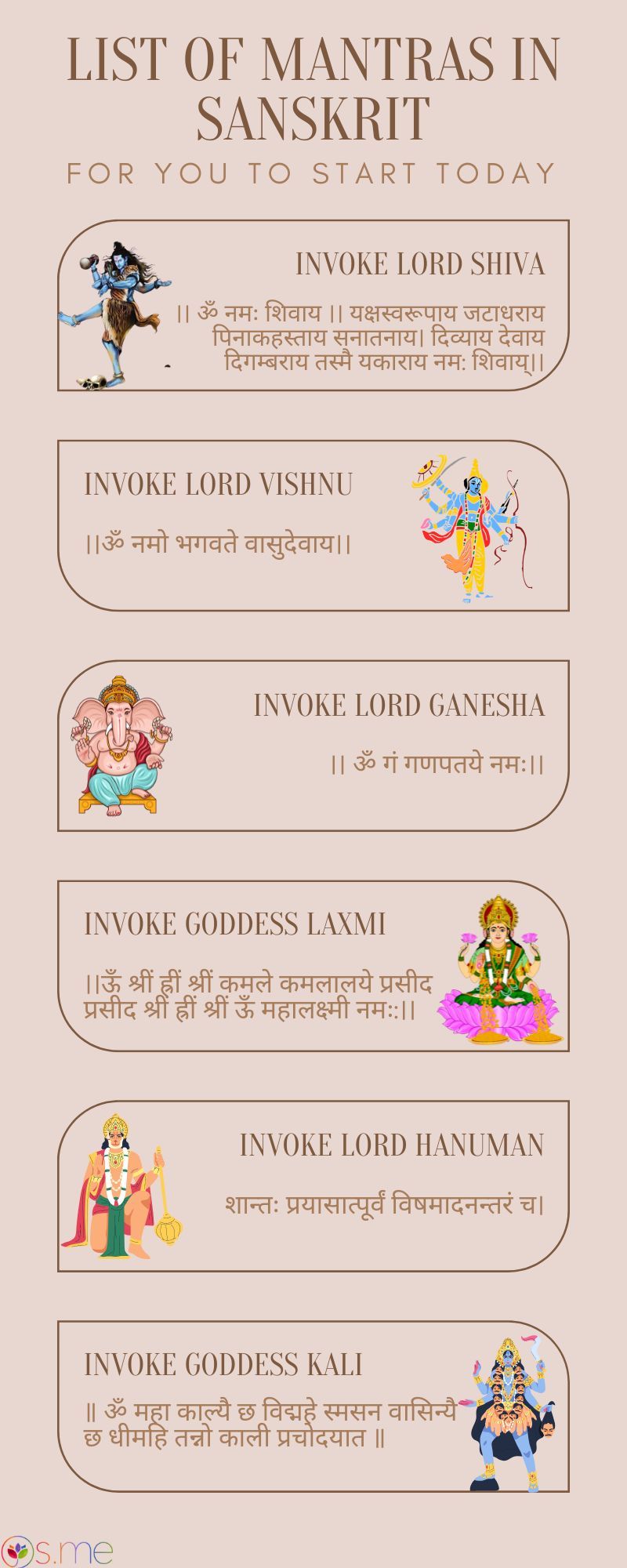
Mantras in Spirituality
The energy of mantras is aimed at calling upon the universal energy, drawing attention toward us. And mantra yoga is a path to strengthen your bond with this universal energy so that you may realize your potential.
Mantra sadhana, the practice of mantra yoga, helps you connect with the universe at a higher realm of consciousness beyond the comprehension of the average mind.
The basic principle of the mantra sadhana is to practice the utterance of a sound with such intensity, fervor, and determination that your whole being starts reverberating with that sound. You become the sound itself.
When you become one with a mantra, you no longer remain the individual you are. The path of the sadhana has the power to make you the master of your destiny.
A mantra is usually passed on traditionally and orally in a guru-disciple relationship.
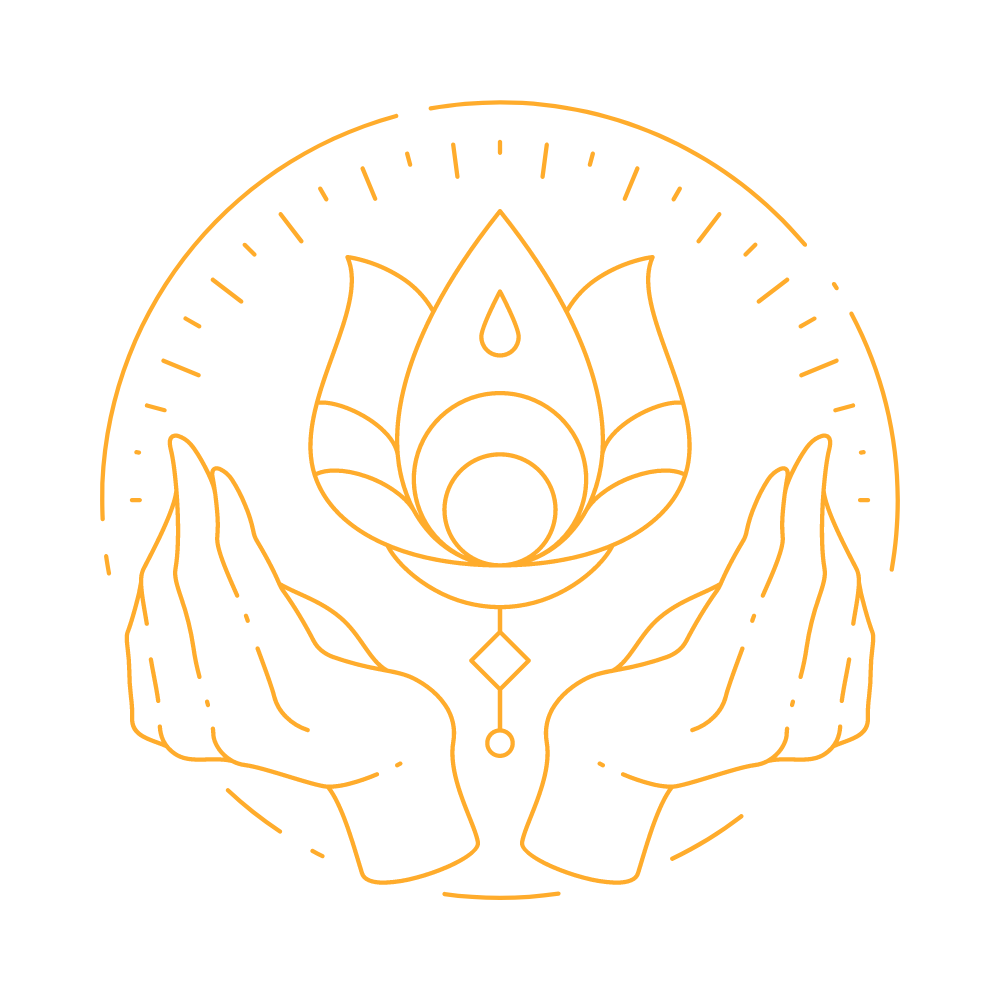
Chanting a Mantra
Let’s start with the most common mistake people make in chanting mantras.
Chanting without feeling or chanting just for the sake of it does not bring the promised rewards.
The quality of chanting is as important as the quantity of chanting. For this, devotion and faith are the two most important factors. These two are synonymous with spiritual love.
When you chant sincerely and mindfully, there are four stages that you normally go through:
1. Spoken Chanting: Here, the mantra is verbalized and uttered. When we speak or write the mantra, we strengthen our connection with the external world. Mantra sadhana is, however, an inward process that brings us gradually to the second stage.
2. Whispered Chanting: In this, you move your lips just about. When you whisper the mantra, the mind naturally concentrates a bit more. Be sure to whisper discreetly so that you are the only one able to listen to your mantra.
3. Mental Chanting: Here, there’s no external sound, and your lips don’t move either. Remember, though – mentally chanting your mantra loudly is not real mental chanting. Real mental chanting is to recall your mantra with concentration, one word at a time.
4. Unspoken Chanting: In this, the mantra is no longer chanted. It is not a conscious act. It is something that happens to you. This fourth stage is reached naturally when the first three are followed diligently over a long period.
The Transformational Power of Mantras
Mantra science believes that when we use the right words to train our mind, sharpen its focus and channel the divinity in the universe, we can rise above every negative tendency that holds us back and go past the shackles of the limited conscious mind.
When practiced correctly, you can benefit immensely from the power of mantras materially, intellectually, and spiritually; they help you progress. How you use mantras to further your cause is, of course, an individual decision.
However, the ultimate reward for a mantrin is to merge his spiritual consciousness into the universal consciousness while alive.
Because mantra grants the seeker liberation.
This has been Om Swami’s truth. Are you ready to discover your own?
The information provided in this article has been sourced from The Ancient Science of Mantras by Om Swami. You can purchase a copy of the book here.
FREQUENTLY ASKED QUESTIONS
Perhaps you are new to the path of spirituality or mantra yoga. Perhaps you are looking to deepen your already existing practice. Or perhaps, you are simply curious about the world of mantras and want to learn more.
The questions below have you covered.
1. What are the different elements of mantra chanting?
The amount of grace you receive on the path of mantra yoga is directly proportional to how sincerely you fulfill the 16 conditions. They are:
1. Bhakti (devotion)
2. Shudhi (purification)
3. Asana (seat)
4. Panchang Sevan (five types of food)
5. Achara (conduct)
6. Dharana (concentration)
7. Divyadesh Sevan (self-identification)
8. Prana Kriya (breath regulation)
9. Mudra (hand locks)
10. Tarpana (libations)
11. Havan (fire offerings)
12. Bali (sacrifice)
13. Yaag (contemplation and inner worship)
14. Japa (chanting)
15. Dhyana (meditation)
16. Samadhi (absorption)
It may sound a lot but for the sincere practitioner, who continues to practice step-by-step, it all comes together naturally.
Read more about these 16 elements with the help of short stories in an excerpt from The Ancient Science of Mantras.
2. Is there a real story of a mantra practitioner who experienced transformation?
There was this person in Canada – and I am telling you his real-life story, which I witnessed over a period of time. When I first met him in India, he was a devout worshipper of the Mother Goddess and ardently chanted the Gayatri mantra.
He was the first one whom I saw who actually had Gayatri siddhi. Siddhi is when a mantra becomes your own and you become the mantra; the energy of the mantra works through you, lives in you, benefitting other people. He blessed and helped many people sail through difficult circumstances in life.
When I first met him, this man’s radiance was extraordinary. He had such a beautiful, effulgent face; you could look at him all day, and still feel as if you were receiving the love, warmth, divinity, and grace that flowed from him. Those were the days when I did a lot of astrology – I was 15 years old then.
This sadhaka’s dedication was phenomenal. He had been chanting the Gayatri mantra, 16 rounds, every day. One round of chanting is 108 times. Every day for roughly 40 years, he never missed his chanting routine.
I’ll digress for a moment to tell you a little incident from his life.
Continue reading Gayatri Sadhana.
3. Which is the one non-negotiable factor in bringing a mantra to life?
Irrespective of what path you are on, your determination to persist and persevere, your resolve to tread the path, your eagerness to adapt, adopt and learn, and your enthusiasm and intensity, determines the outcome.
The Sanskrit term for a vow, for determination, for oath is Sankalpa. When you take a decision, a stand, you have taken a saṅkalpa/sankalpa.
I have devoted twenty years of my life in doing various practices around mantra yoga, the way of the sacred sounds. In the science of mantras, an area of my specialization, puraścaraṇa, the esoteric practice of bringing a mantra to life, is primarily based around the practice of resolve.
When you resolutely stick to Sankalpa: The Practice of Resolve, you will experience an inexplicable inner strength. Such new-found strength will enable you to reach Sahaja, an emergent natural state of bliss ultimately.
4. What are some mantra sadhanas I can do?
I am mighty pleased to share the extremely beautiful and powerful Nav-Durga Sadhana with you. If you feel in your heart any devotion or reverence for Mother Divine or the feminine aspect of creation then you may enjoy and benefit from this sadhana a great deal.
There are two parts of this sadhana: morning and evening. You will need to set aside about thirty minutes in the morning and approximately forty-five minutes in the evening (anytime during or after sunset is okay) for nine days.
To understand the mechanics and dynamics of this sadhana, please patiently read the notes in Nav Durga Sadhana – Invoking the Divine Mother and Mantras for the Nav-Durga Sadhana in Navaratri.
5. What types of chanting beads can be used in mantra meditation?
There are many types of chanting beads, of which the three most common are tulsi, chandan and rudraksh. The video below elaborates on which type of bead is used for which type of mantra meditation.

Timeline:
- 0:20 – 1:08: Uses of the common types of chanting beads
- 1:08 – 2:18: Types of beads in mantra sadhana and tantra sadhana
- 2:19 – 4:25: The ultimate chanting beads
- 4:26 – 6:48: Types of mantras in mantra sadhana
- 6:49 – 10:49: Becoming one with a mantra

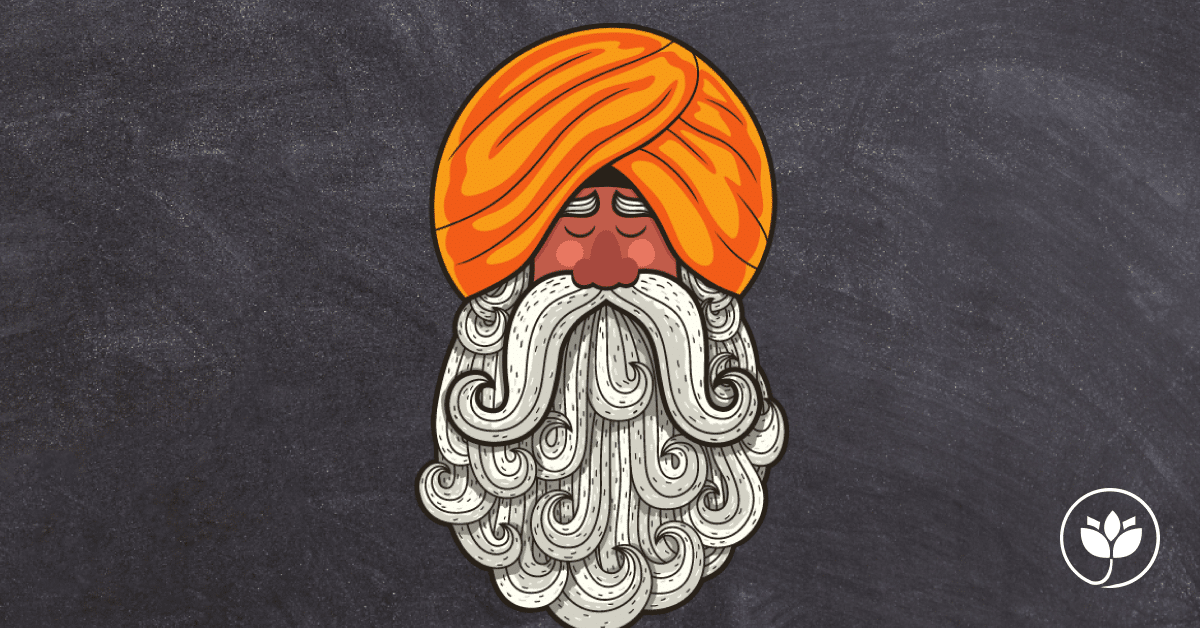


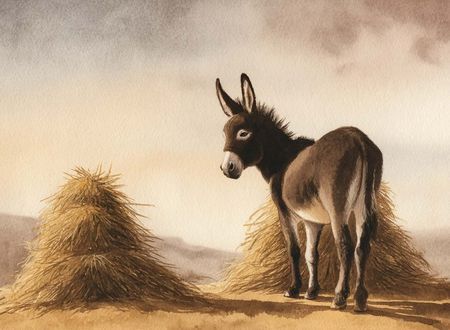




Comments & Discussion
14 COMMENTS
Please login to read members' comments and participate in the discussion.